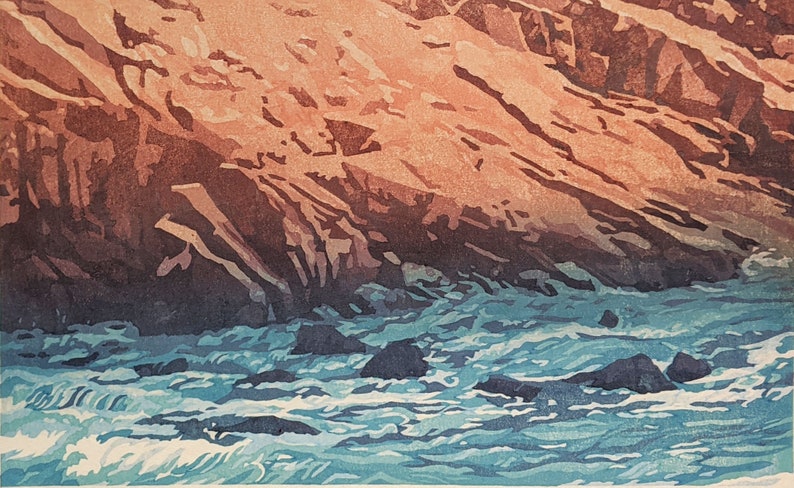

These can be V gouges, U gouges, hangito knives etc. See our collagraph blog post here.Ĭutting tool – a tool used for carving into a block. These are often printed using the intaglio method but can also be printed in relief. This colour system is used in halftone screen printing, where each colour is created as its own halftone exposed screen and printed separately, giving the overall look of a full-colour print.Ĭollagraph – a print made from a plate that has been layered with various natural and found materials to a base and then usually varnished. Traditionally, a chop shows the printer or publisher but is now sometimes used to show the artist.ĬMYK – cyan, magenta, yellow and black. See more here.Ĭhop – a small mark printed in the margins of a print to show the maker. Traditionally used to enable fine, delicate prints, now more often used to add areas of coloured paper to a single colour print. Fine carborundum here.Ĭhine Collé – a process in which ink is transferred onto a thin sheet of paper (such as archival tissue paper) whilst simultaneously sticking the thin sheet to a stronger, thicker sheet of paper. Carborundum can also be used for levelling the surface of a lithography stone. When applied to a plate, carborundum creates a rough, even surface that holds a lot of ink. In mezzotint, the surface created by the action of the rocker.Ĭarborundum – silicon carbide – a fine powder used in intaglio printmaking. Rollers can be found here.īurin – an engraving tool with a metal shaft and usually a sharp V gouge point.īurr – in drypoint, the ridge of metal (or plastic) thrown up on either side of the needle as it scratches into the plate. See our blog post on editioning prints for more information.īrayer – a roller used to apply ink to a printing surface. This is usually made when the artist themselves is not printing the edition: a B.A.T print is used to show the print from which the whole edition should be matched. lino, ply etc.īon a tirer (BAT) – The first perfect print to come from the printing surface. Digitally, bleed can also refer to the extension of the design beyond the cut or crop line to ensure the image runs to the edge of the print.īlind emboss – an embossed impression in the paper, often made from a block without ink.īlock – the material into which a design is carved for relief printmaking, e.g.

Bench hooks can be found here.īinder – (see medium) a clear substance to which pigment is added to create printmaking inks.īite – the action of an acid on a metal plate.īlanket – used as cushions in printmaking presses between the roller and the paper.īleed – where ink appears outside the designed areas of a print. Find barens here.īed – refers to the flat surface of a printing press on which the block or plate is laid.īench hook – a tool that hooks onto a table with a stop to hold a block in place whilst it is being carved. See our blog post on editioning prints for more information.īaren – a disk-shaped printmaking tool used to hand burnish a print by rubbing it over the surface of the paper when it is in contact with the inked-up block. They are usually identical to the edition but may sometimes include slightly flawed prints omitted from the edition. Artist’s Proof prints usually shouldn’t exceed 10% of the overall number in the edition. Tonal variations are achieved by varying the length of time in the acid bath.Īrtist’s Proof (AP) – Artist’s proof prints are made by the artist to check the print quality and design before printing an edition.

The acid bites into the plate, producing a surface that can hold ink for printing. Usually, a metal plate is given an acid-resistant coating before being placed in an acid bath. You can find Aisukis here.Ī la poupée – an intaglio printmaking technique in which different coloured inks are applied to a plate with a wad of fabric.Īquatint – an etching technique in which tones are achieved. Acids contribute to the deterioration of paper and therefore of prints.Īisuki – a rounded, bevelled chisel tool used in Japanese Woodblock Printing, often used for clearing areas of wood. Scroll through the list below to find definitions and explanations of common printmaking terms:Īcid-free – refers to papers that are made with an alkaline pulp, usually with calcium carbonate added.


 0 kommentar(er)
0 kommentar(er)
